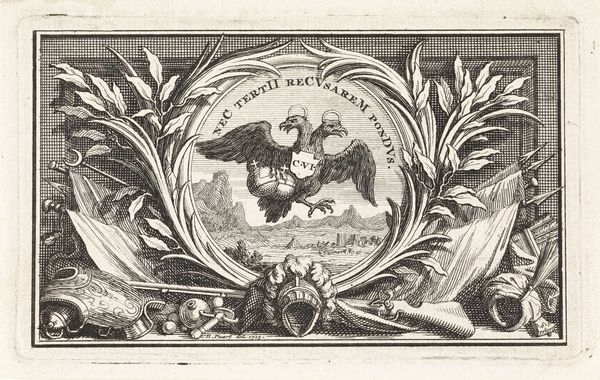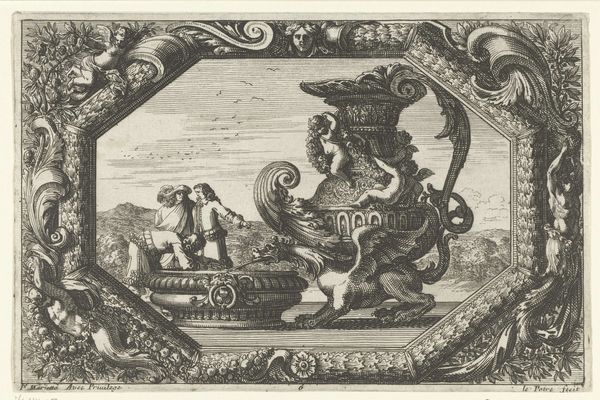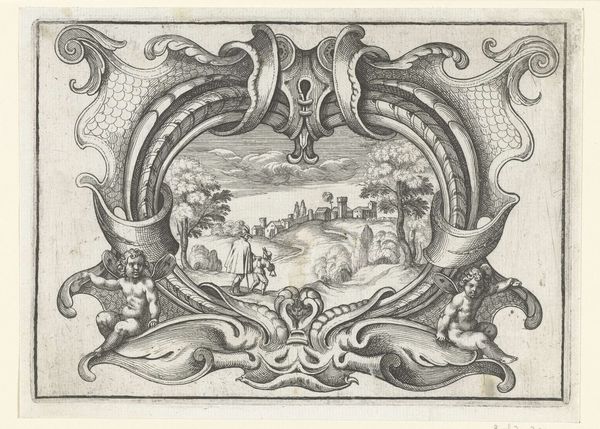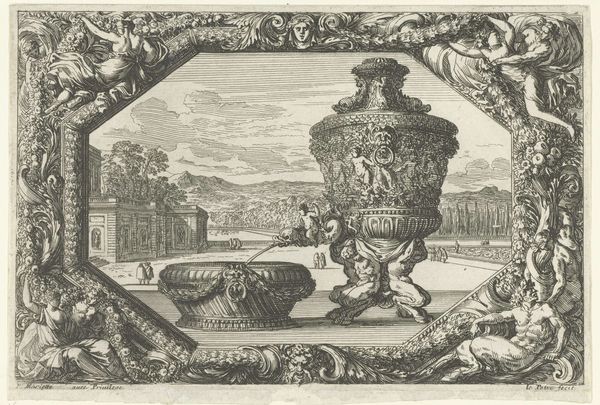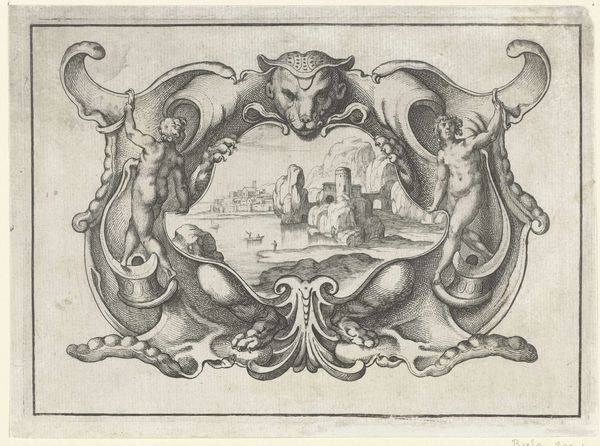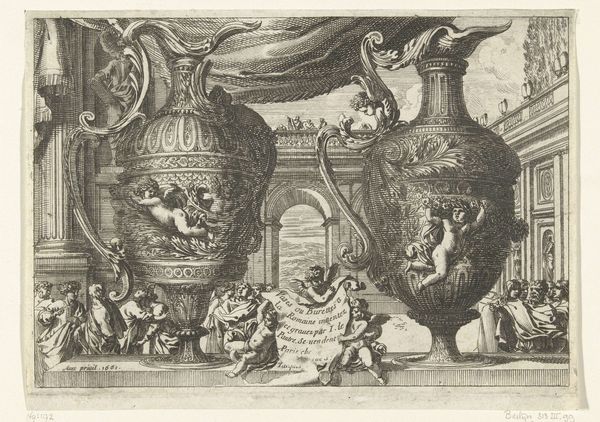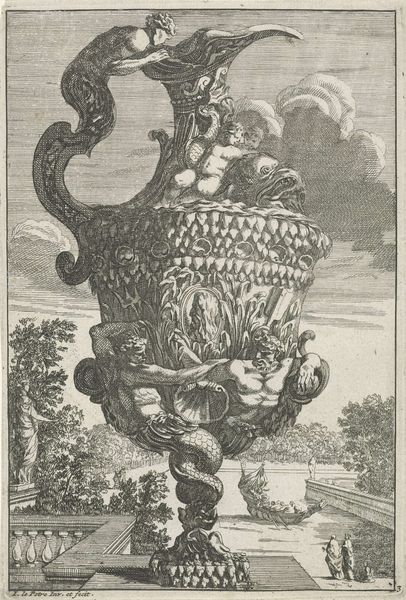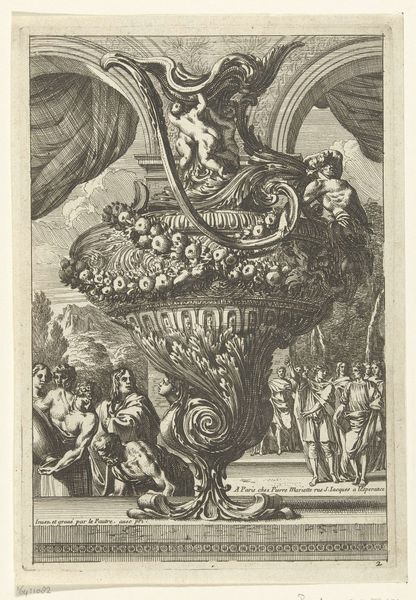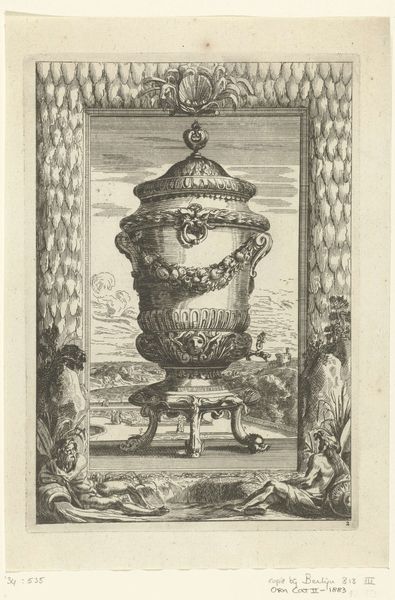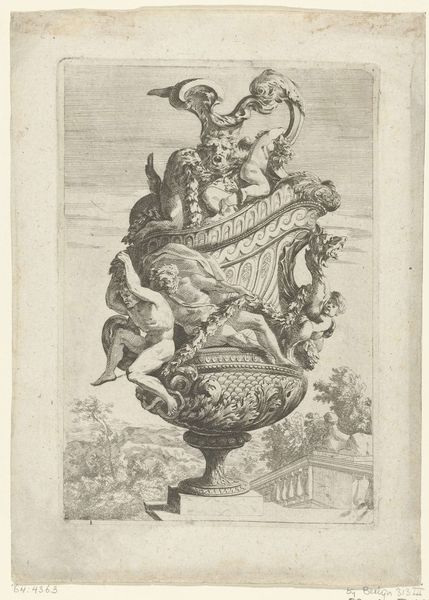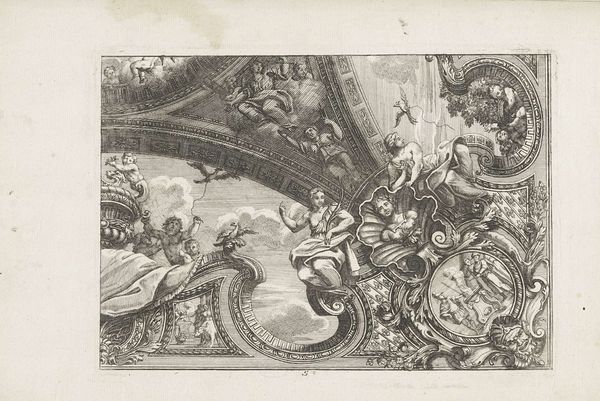
engraving
#
allegory
#
baroque
#
pen drawing
#
old engraving style
#
landscape
#
form
#
line
#
history-painting
#
engraving
Dimensions: height 145 mm, width 219 mm
Copyright: Rijks Museum: Open Domain
Curator: This engraving, titled "Bassin en mobiele waterfontein in cartouche," was created around 1687. It’s currently held in the collection of the Rijksmuseum. What strikes you first about it? Editor: The sheer density of detail, I think! It’s like visual overload in the best way possible. There's a sort of stage setting with draped curtains, and everything—vases, cartouche frame, background—is absolutely crammed with ornament. Almost hallucinatory. Curator: It's certainly characteristic of the Baroque style—an era that relished in extravagance to project power. Looking at the inclusion of what seems like an allegorical subject within, form and setting are just as integral. Editor: Allegorical definitely rings true, it does seem as though we're peering into someone’s grand vision. The cartouche is alive, animated with figures. Water themes really are evoked beautifully in monochrome. Curator: Absolutely. The historical context is also quite intriguing; works such as these provided templates for architects, designers, and artisans to display the owner's cultural awareness as well as influence trends across Europe through circulation. It also embodies history-painting! Editor: I find that really fascinating. You can imagine artisans poring over details for inspiration. A world absent the visual bombardment of today... These images had some punch to them back then. How things changed. Curator: The fountain motif also plays an important public role, emphasizing the societal dependence on efficient civic infrastructure. The fountains were used in social gatherings, especially ones near political infrastructure like government buildings, making access to running water a form of public identity, a form of unity, if you will. Editor: It is beautiful when viewed in that manner, because most viewers today may not recognize it, that running water, an element we've grown desensitized to is symbolic of life itself and it is a very intimate detail embedded in a fountain piece such as this one. I never would have figured! Curator: Indeed, it prompts me to reconsider water not just as utility, but also luxury. We’re now ending on a vital tangent there about our relationship with the planet that even folks of the 17th-century might understand, haha. Editor: Well, I definitely agree about shifting paradigms - water indeed! Thank you for this refreshing enlightenment as usual!
Comments
No comments
Be the first to comment and join the conversation on the ultimate creative platform.
